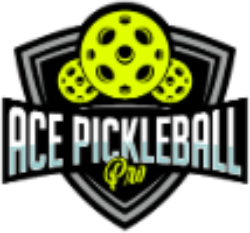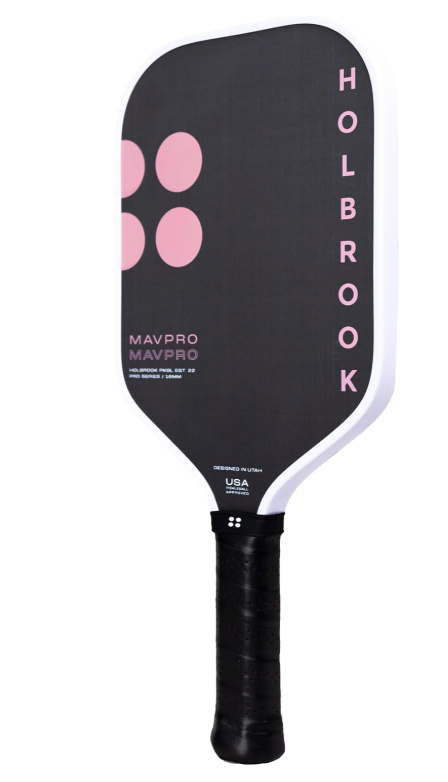Holbrook Mav Pro 2.0 Review: The Paddle That Rewrites Pickleball Strategy
It Didn’t Feel Like Power. It Felt Like Permission.
Three points into the match, I paused—not because I missed, but because I landed something I usually didn’t. My drop shot didn’t float. My third-shot drive didn’t flare out. And my tempo? Untouchable. The paddle wasn’t giving me more control—it was giving me space to breathe between decisions.
That’s when I knew: this wasn’t a typical upgrade. This was a cognitive shift.
Enter the Holbrook Mav Pro 2.0—a paddle tuned for a game that’s evolving faster than players realize.
The Paddle as an Extension of Cognitive Bias
We’re moving past “power” vs “control.” The next era of paddle design is about predictive balance—gear that fits how your mind weighs risk and reward across each rally decision.
The Mav Pro 2.0 fits this philosophy like a neural glove.
Cognitive Reframing Insight:
Think of this paddle as a game theory equalizer. It doesn’t just respond—it pre-empts. You can play the third, fourth, and fifth shots before they happen thanks to its forgiveness and speed-to-grip ratio. That’s not reaction time; that’s fractal-level gameplay.
Want to learn more about reading the game at this level? Start with the basic strategy for beginners—then imagine applying that strategy four moves deep.
Coaching 3.0: Paddle Tech Is Reshaping Teaching
Just like AI changed chess openings, paddles like the Mav Pro 2.0 will change how players are coached.
- Old school focus: Shot mechanics, footwork, court position
- New school shift: Paddle leverage, micro-movement drills, adaptive tempo reads
Pro Tip: Instead of hitting 50 forehands in a row during practice, start running paddle-specific micro-drills. Try hitting soft topspin drives while switching between 60% and 80% grip pressure. The Mav Pro 2.0 will tell you what tempo it likes—listen to it.
Curious how spin fits into this? Here’s how to get more spin in pickleball with paddles like this.
Paddle Tech as a Gateway to Personalization
Holbrook’s T700-carbon face is a signal. The Mav Pro 2.0 is less about where tech is and more about where it’s going.
Creative Insight:
Within 24 months, we’ll see sensors built into handles. Imagine a paddle that reads:
- Grip tension
- Spin rate
- Tempo shifts
… and feeds that back into an app to track your improvement.
Pro Tip: If you play in humid or dusty conditions, test your grip mid-match. The Mav Pro’s carbon surface performs differently with moisture build-up. Wipe the face and grip with a microfiber cloth between games—it can help maintain optimal spin response and paddle “pop.”
Think Fitbit meets paddle. The Mav Pro 2.0 is Step One.
The Paddle as a Neural Prosthetic
This isn’t gear—it’s a feedback loop for your brain. It’s like a musician’s instrument or a pilot’s yoke. Its tactile response speeds up your decision cycle.
Analogy:
The Mav Pro 2.0 functions like a friction amplifier. It doesn’t just return the ball—it changes how you compose points.
Want to know how players use friction to shape tempo? Learn about dead dinks and drop shots that play to paddle texture.
The Rise of Hybrid Play Personas
With paddles like this blending speed, spin, and control, we’re seeing players morph in real-time. No more “power player” vs. “soft game.” Now we’ve got:
- The Modulator – adjusts style based on opponent rhythm
- The Frictionalist – weaponizes spin and texture
- The Drift Hacker – controls pace with angle manipulation
Pro Tip: Want to unlock your hybrid play style? Film a match and identify the three most common mistakes when switching between power and control shots. The Mav Pro 2.0 exposes those gaps beautifully—not to shame you, but to sharpen you.
The Mav Pro 2.0 is built for these archetypes. Its speed-grip balance and rotational torque resistance make it a sandbox for stylistic evolution.
Trying to find your playing style? Start with this breakdown of player levels to see where you land.
✅ Pros & Cons Breakdown
What You’ll Love:
- Forgiving sweet spot—ideal for hybrid or evolving players
- High spin potential with excellent tactile feedback
- Exceptional balance between speed and soft game
Potential Trade-Offs:
- May lack pop for raw power hitters
- Slightly higher learning curve for beginners (but worth it)
- Not the lightest paddle—some may prefer more finesse
Still unsure what to look for? Here’s a guide on what makes a good paddle.
Bonus: Pro Tips for Getting the Most from the Mav Pro 2.0
- Drill with dynamic grip changes to explore the paddle’s sweet spot range.
- Pair it with a high-tack overgrip if you sweat heavily—carbon face = no forgiveness for slippery grips.
- Use a wall or machine to test reflex angles—the paddle’s speed will teach your body new timing windows.
👉 Need ideas? Here’s how to practice against a wall.
TL;DR: The Quiet Revolution in Your Hand
The Holbrook Mav Pro 2.0 is the beginning of something bigger.
- It’s coaching players to think 3–4 shots ahead.
- It’s shifting drills to prioritize spin, angle, and leverage.
- It’s pointing to a future of smart paddles and biofeedback systems.
- It’s creating a new class of players who evolve as they play.
In a sport known for its simplicity, this paddle adds layers of possibility. And that? That’s how revolutions start.
Ready to Rethink Your Rally Flow?
If you’re still playing with the same paddle you started with, the game may have already passed you.
The Holbrook Mav Pro 2.0 doesn’t just make you better—it unlocks parts of your game you didn’t know existed.
👉 Explore the Mav Pro 2.0 at Ace Pickleball Pro and see why next-gen players are switching to gear that thinks as fast as they do.

